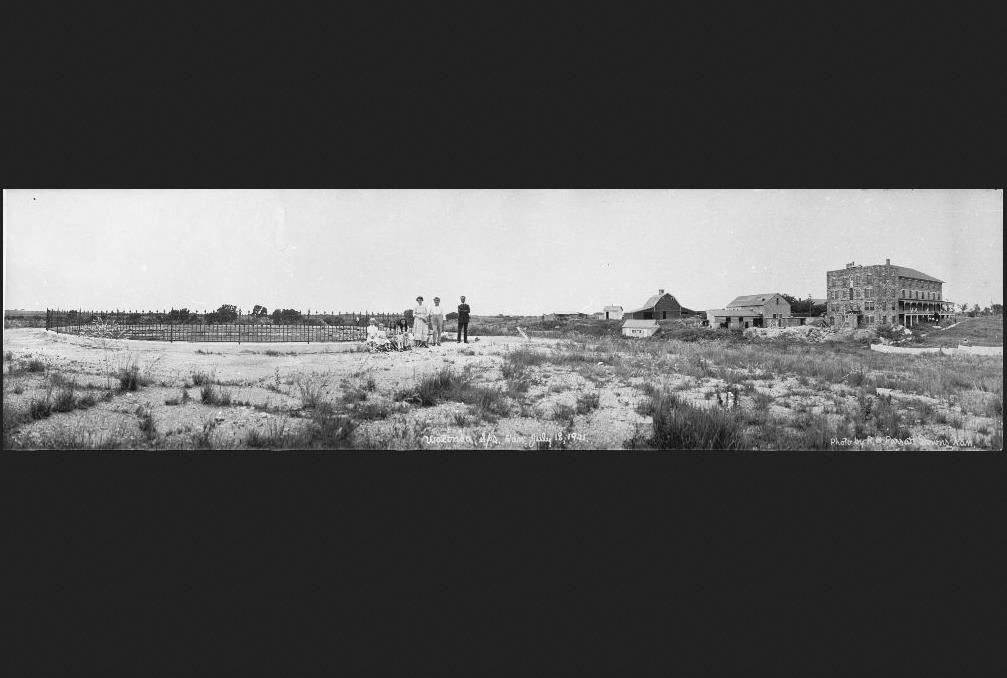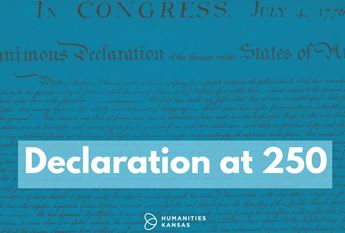

Waconda Springs, From Sacred to Submerged
The name Waconda comes from a Kansa word meaning Great Spirit, and the site carried such religious importance to the Kansa and other tribes that it was considered neutral territory and open to any group to visit.
For centuries, tribes from the Central Plains revered the Waconda Springs, located in what is now Mitchell County in north central Kansas. The name Waconda comes from a Kansa word meaning Great Spirit, and the site carried such religious importance to the Kansa and other tribes that it was considered neutral territory and open to any group to visit.
Tribal members believed that the springs contained the spirits of animals, and they visited the site to gain knowledge from these spiritual beings. After Native removal, the springs captured the imagination of Anglo settlers to the area who drank the water in hopes of curing their ills.
In 1866, surveyor David E. Ballard described the springs this way:
“The Spring itself is a natural curiosity, it being located on the summit of a cone-shaped limestone rock. The rock is circular, about 200 feet in diameter at the base and about 30 feet high, upon the summit of this, rests the spring, the basin being circular and about 30 feet in diameter”.
The water from the springs gained such popularity that in 1904 it won a medal at the St. Louis World’s Fair for its medicinal value. A couple of years later an enterprising doctor named G.F. Abrahams turned the land surrounding the springs into a health spa to capitalize on the notoriety and advertised his venture with the promise that the water from Waconda Springs would “clean your works until your works work.”
In 2010 Kansas State University student Matt Kelley interviewed John Bingesser, great grandson of Dr. Abrahams about life at the spa as part of Kansas State’s Lost Kansas Communities Project; the project is housed at the Chapman Center for Rural Studies. Bingesser was born in a house on the site of the springs in 1939 and he lived on the 350-acre spa and farm until its demise in 1964 to make way for the dam.
He recalled administering baths to sanitarium patients with water piped from the springs heated “as hot as they could stand” and then spraying them with cold water in order to enhance circulation. To his recollection, the treatments worked and the spa regularly hosted 40 patients a day with most patients staying at the resort for many weeks.
One such patient was Perry Weston. Hailing from Nebraska, Weston made several trips to Waconda between 1916 and 1937 to help his heart ailment. While there, he took hot and cold baths, got massages, and went on juice diets. In one letter home, Weston wrote, “I have taken three baths in all. Yesterday they did not get me so very hot. Just when I got to sweating good he turned on the cold water and froze me. This is a funny place to doctor.” Though he thought it a “funny place,” Weston kept returning, and even took the spring’s water home to Nebraska in a Red Wing Stoneware jug, now in the Kansas State Historical Society’s collection.
Bingesser remembered filling up “countless numbers” of gallon jugs with spring water and shipping them off to customers from around the country at the Missouri Pacific Railroad depot, which built a line specifically for passengers traveling to the springs for treatment.
He also remembers the spring as more than a spa or resort. For him it was also a farm with pigs, chickens, geese, and cattle. They grew wheat and corn, and all meals served at the sanitarium came from food grown and harvested on site.
In 1944 plans were made to build a dam for flood control at the site. The Bingesser family fought the proposed dam, going so far as to hire an hydrologist who verified the site’s uniqueness. Dam supporters dismissed the findings and referred to the springs as a “mud hole.” The floods of 1951 sealed the fate of Waconda Springs and work on the dam began in 1964 when John Bingesser himself bulldozed the sanitarium site.
To learn more water stories in Kansas, visit Water/Ways Smithsonian Institution traveling exhibition and the companion exhibition SubMerged!, on display at the Geary County Historical Society and Museums in Junction City through February 18, 2018, and its partner exhibition, Water/Ways in Rice County: Our Relationship with Water at the Rice County Historical Society in Lyons through March 31.



